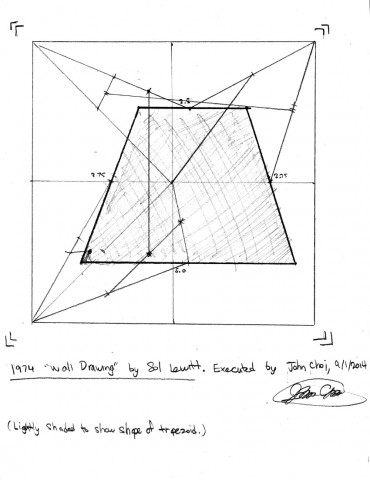Lewitt’s “Wall Drawing” has nothing to do with walls
Here is my interpretation of Sol Lewitt’s “Wall Drawing,” 1974:
If the goal was to confuse and confound artists and mathematicians alike, then Lewitt succeeds very, very well. If the goal was to inscribe a shape into a set of readable and easily transferable instructions, then Lewitt fails miserably. If Lewitt really wanted to transfer a drawing into text, a much simpler solution would have been something along the lines of:
- Draw a square with side lengths 6.5 in.
- Draw a trapezoid with the coordinates of its vertices (1,1), (2,5), (5,5), (6,1).
Perhaps Lewitt follows some very strict and obscure form of logic in the way he writes his instructions, but certain ambiguities may arise from over-complexity, allowing the creation of many valid shapes from the same set of instructions. If we can call Lewitt’s work “code” akin to that of computer programming, then I would have to say it is very poorly written code. Code for computers is not written for computers to understand, but for humans to understand; if the coder fails in this respect, then the coder is either working alone or is simply really bad at the art of coding. Good code should aim for either one or both readability and efficiency; Lewitt’s “Wall Drawing” goes for neither. This is not to say confounding myself in Lewitt’s transcription was not entertaining – at the very least, it was an interesting experience attempting to draw Lewitt’s logical spaghetti.
